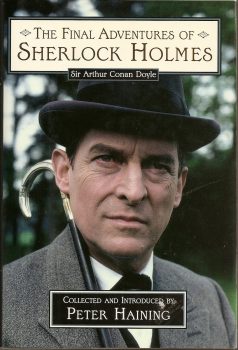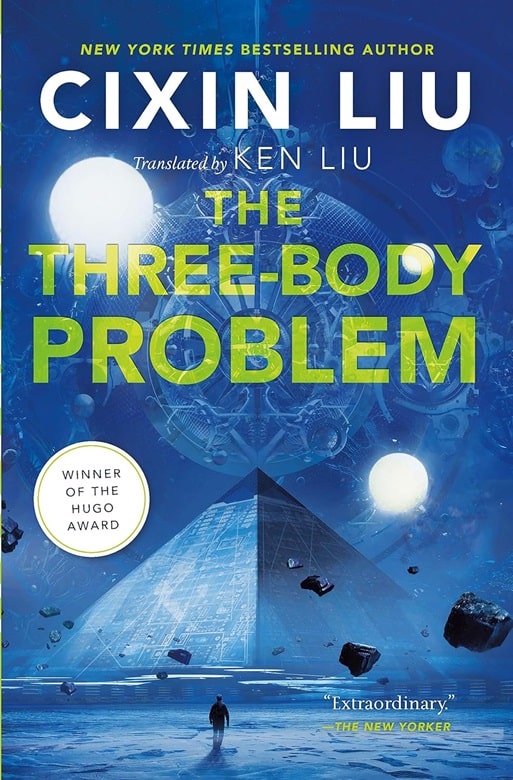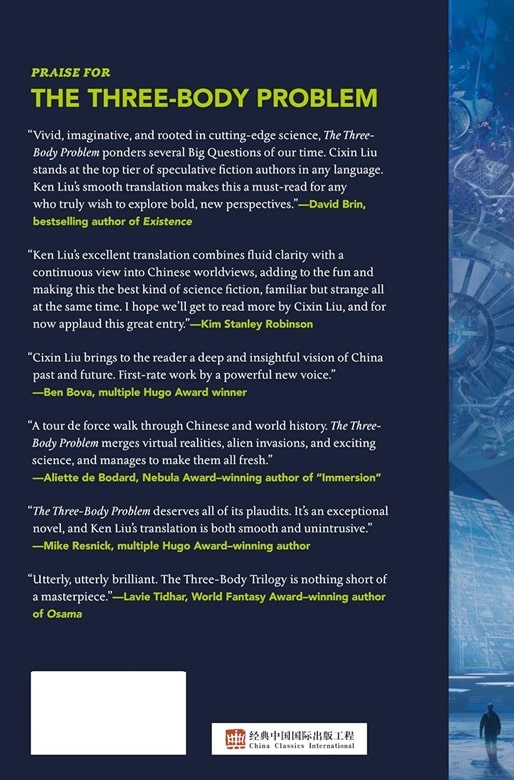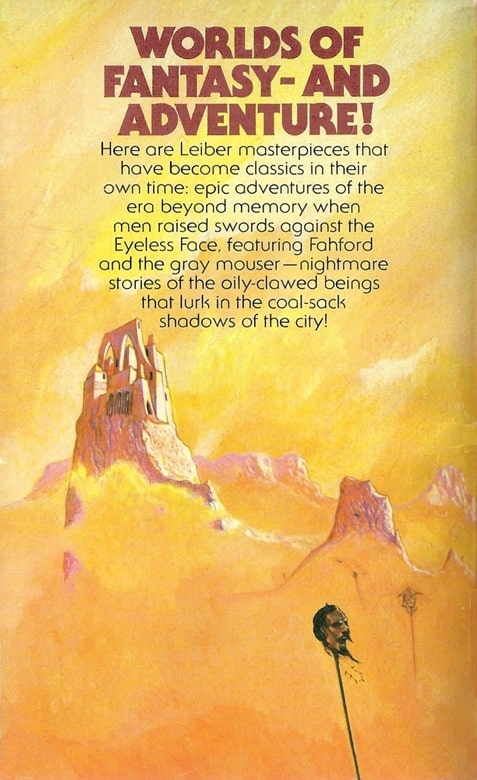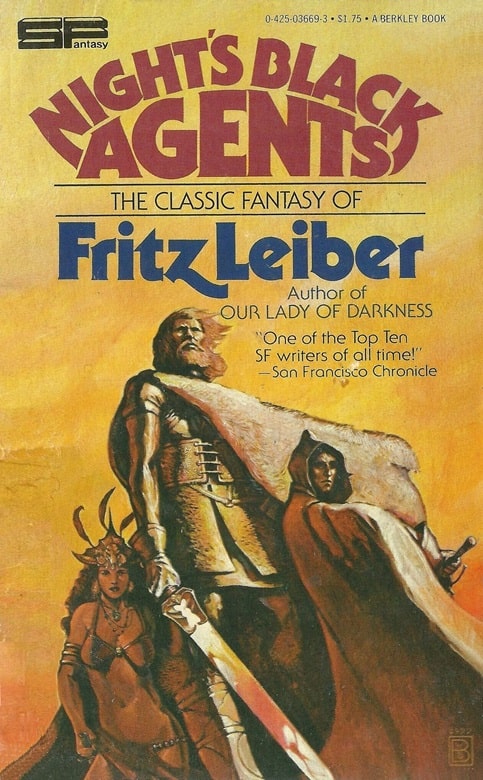Cloud Painters, Alien Blobs, and War in the Asteroids: March-April 2024 Print SF Magazines
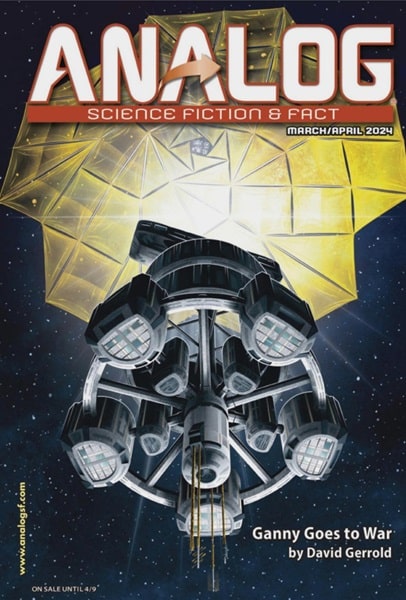 |
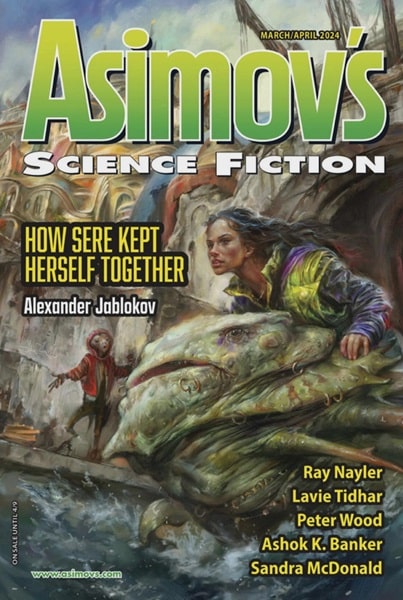 |
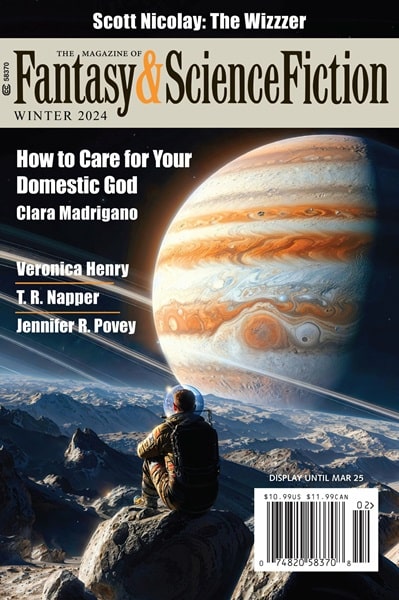 |
March-April 2024 issues of Analog Science Fiction & Fact, Asimov’s Science Fiction, and the
Winter 2024 Magazine of Fantasy & Science Fiction. Covers by Eli Bischof (for “Ganny Goes
to War”), Eldar Zakirov (for “How Sere Kept Herself Together”) and Mondolithic Studios.
There’s some great old-time serial adventure in this month’s print SF magazines. In the Asimov’s SF novella “How Sere Kept Herself Together,” Alexander Jablokov brings back his cynical detective Sere Glagolit (introduced in “How Sere Picked Up Her Laundry,” in July/August 2017, and “How Sere Looked for a Pair of Boots,” January/February 2019) to discover why her client is being aggressively stalked by an enigmatic alien Cryptor.
And in “Brood Parasitism” Auston Habershaw gives us another exciting tale of the shape-shifting alien Tohrroid (first seen in Analog in Jan/Feb 2019, and most recently in the Nov/Dec 2023 issue), this time on a mission to assassinate the leader of an invading alien army. And in “Charon’s Final Passenger” in Asimov’s, Ray Nayler returns to the setting of his popular story “Berb by Berb” in the November/December 2023 issue.
We covered the contents of the Winter 2024 F&SF (delayed by printer problems) last month, but don’t despair! The new issues of Analog and Asimov’s Science Fiction are packed with intriguing new fiction by David Gerrold, Sandra McDonald, Ashok K. Banker, Lavie Tidhar, Faith Merino, William Ledbetter, Sean Monaghan, Matt McHugh, Adam-Troy Castro, Don D’Ammassa, Karen Heuler, and lots more. The enticing details await below.
